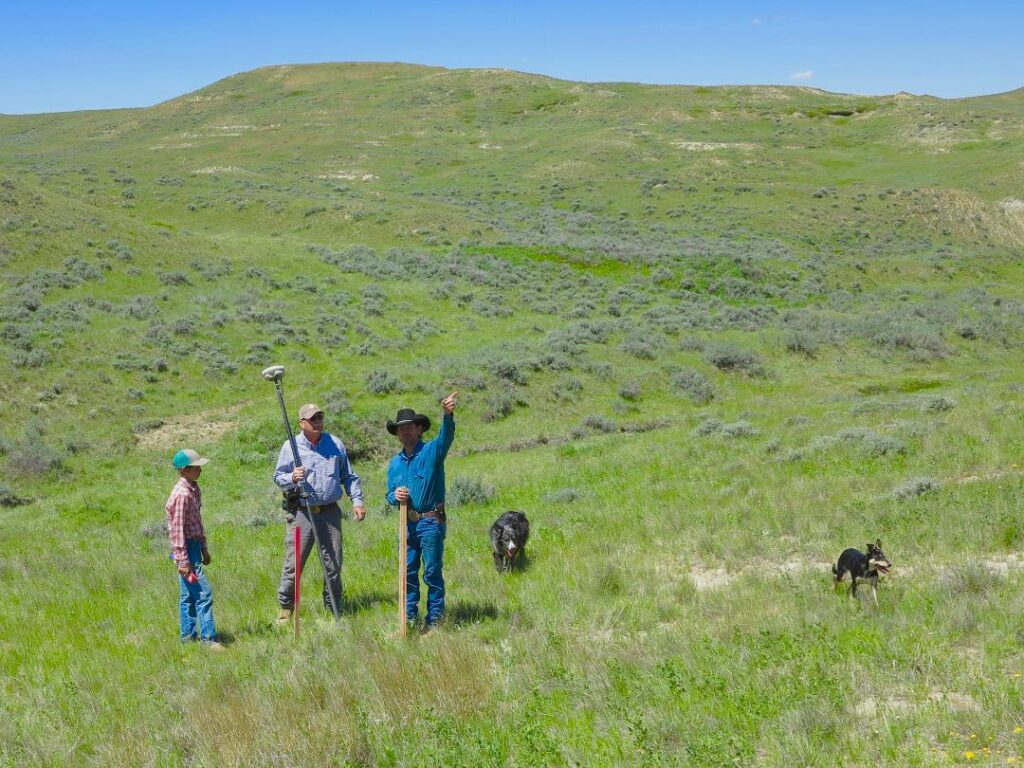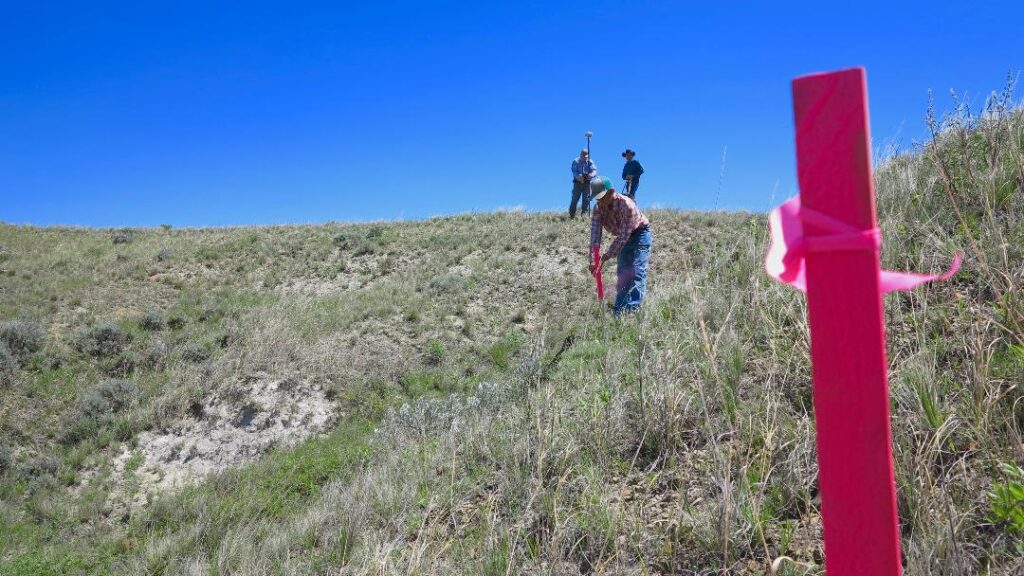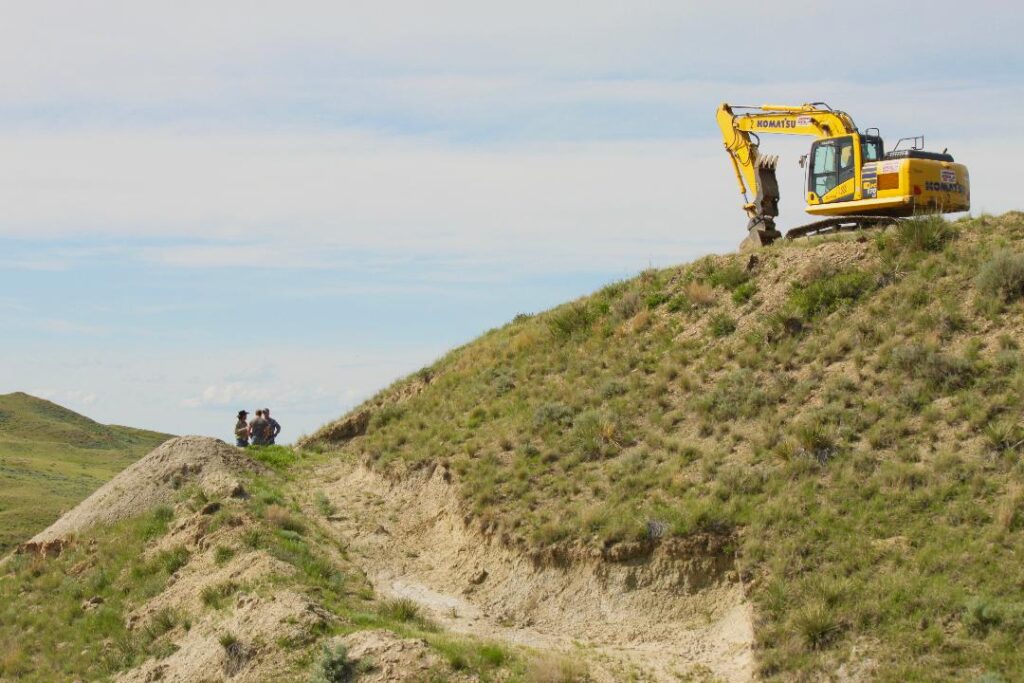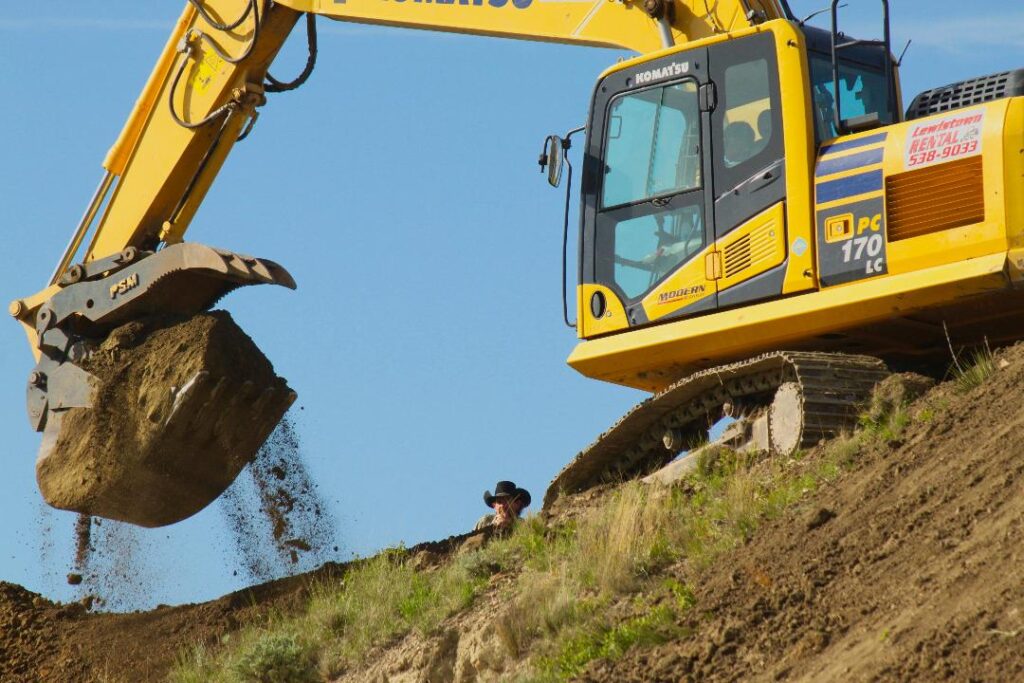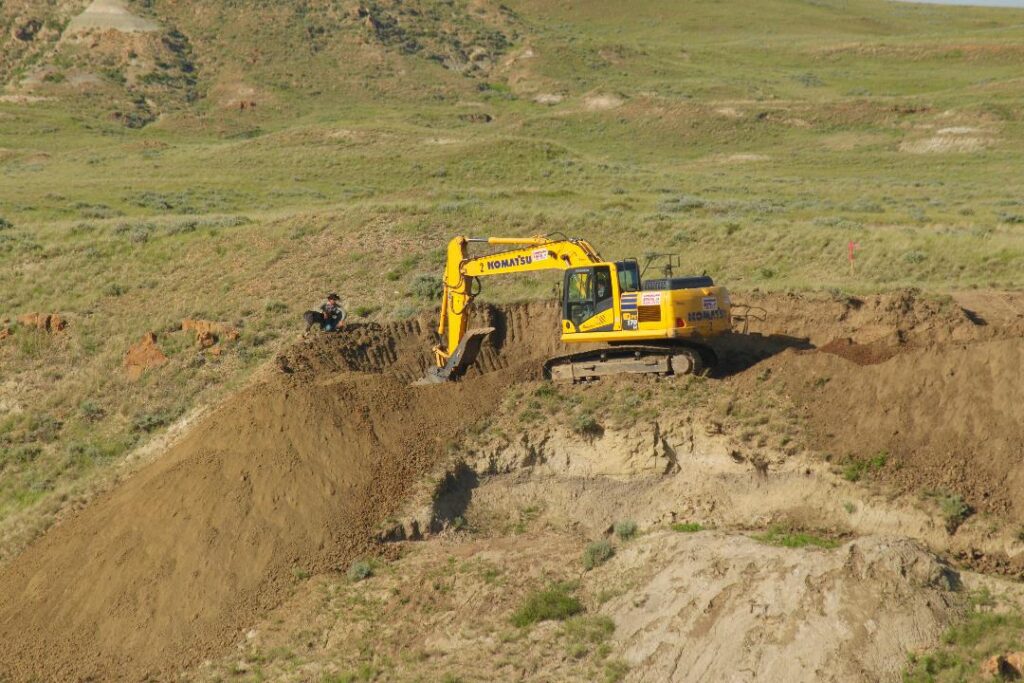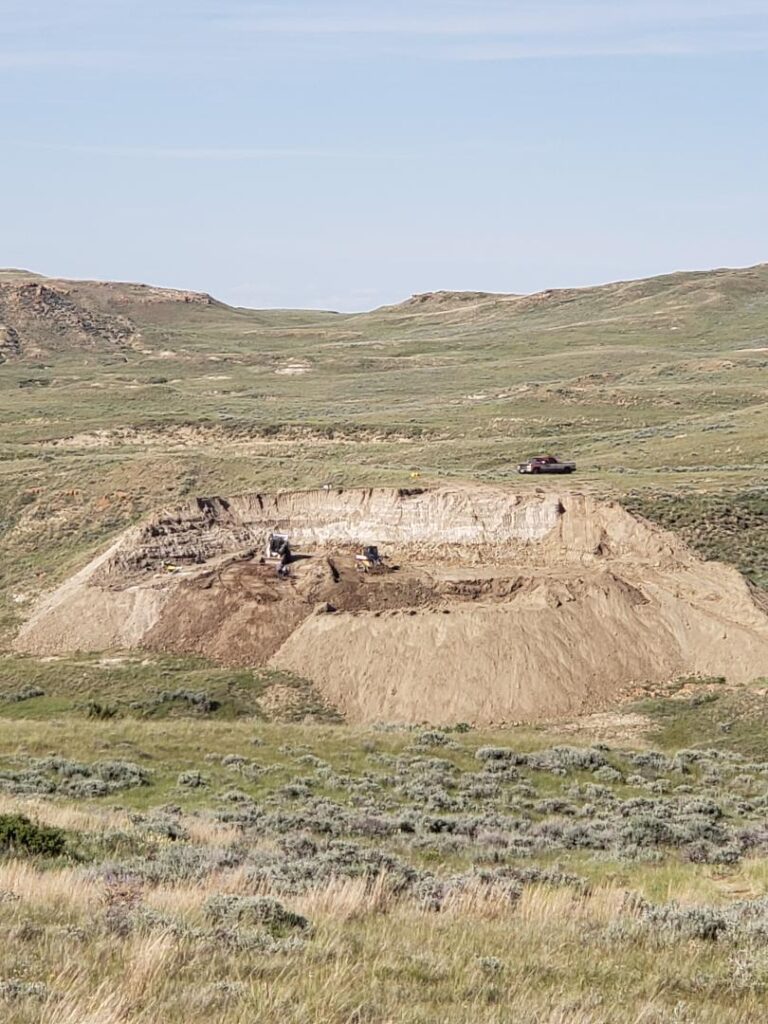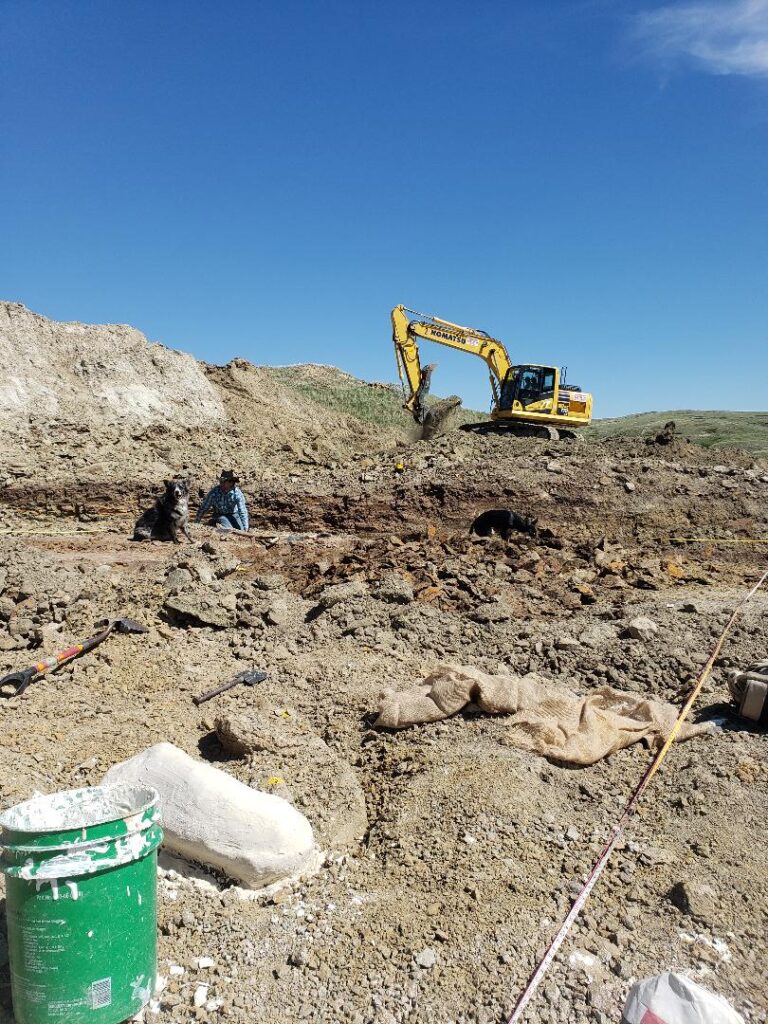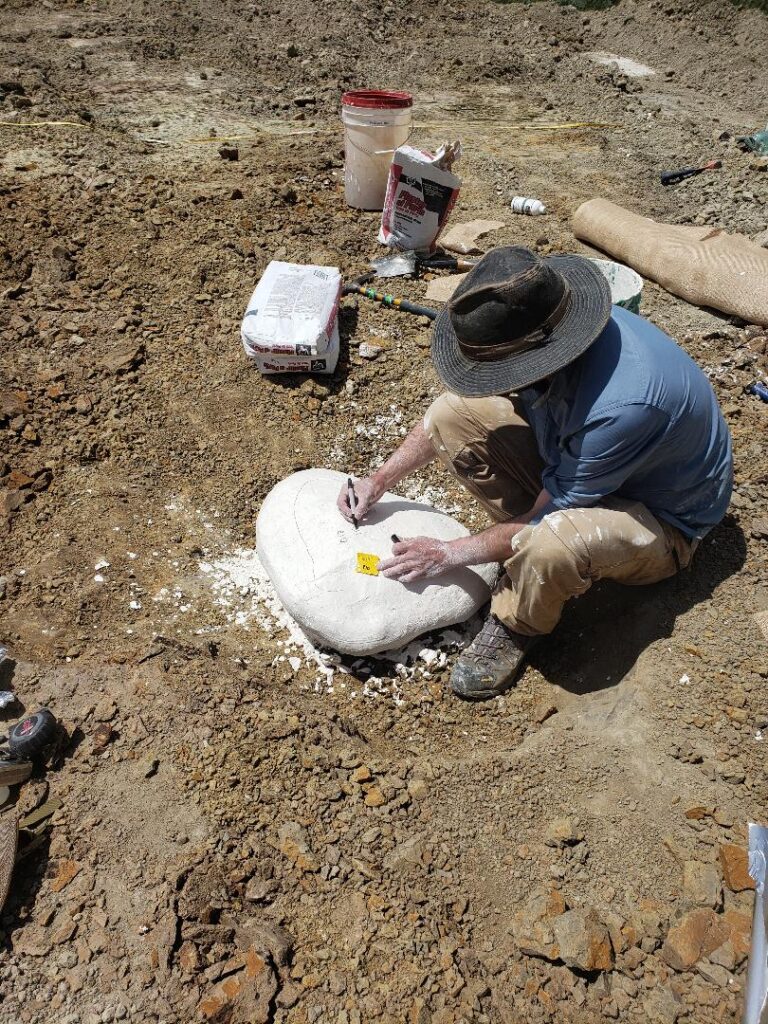6/15/2020 - Survey and Overburden Phase is complete! We are now exploring and mapping the JKrex2020 Quarry!
Below is a picture of the JKrex2020 site, pre-2020 excavation. We are anticipating starting this site in May or June of 2020. Below the image is our preliminary site plan for 2020.
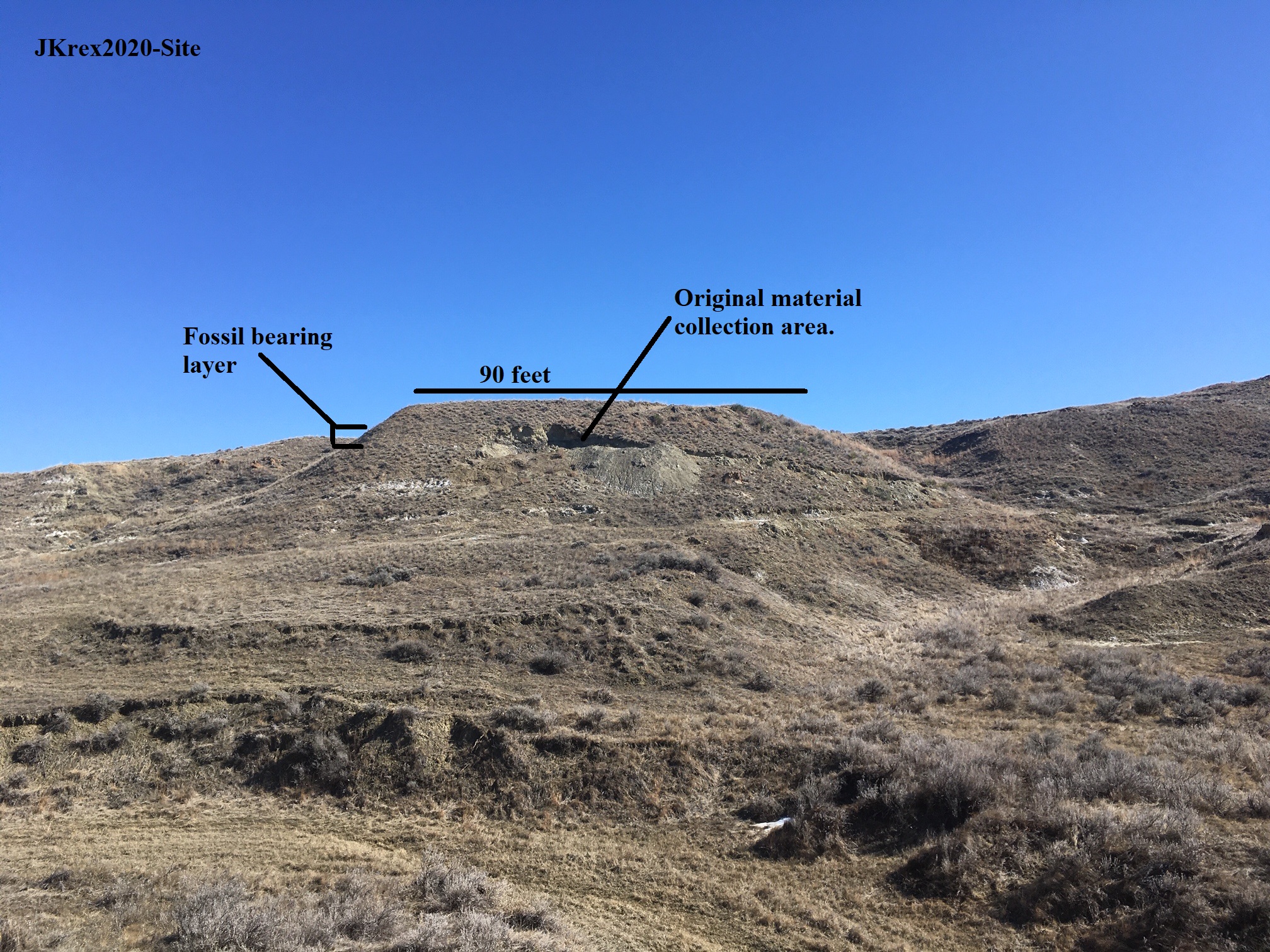
Preliminary Site Excavation Plan "JKrex2020"
Specimens of this caliber warrant a large excavation plan to ensure that the entire fossil bearing layer is searched. For our group, this means we will spend a considerable amount of time and capital to make sure we have exhausted the fossil bearing layer. Below is the outline for the task:
-
Remove Overburden - To ensure we exhaust the layer properly, we start by choosing an amount of overburden to remove to make it safe for excavation and to ensure we collect all elements. The area can need to increase depending on what we find. Over the years, we have learned to start big, specimens like Tyrannosaurus rex can be spread out over very large distances depending on how the skeleton was distributed before burial. For us, we have chosen to start with a 90 foot wide by 20 foot deep into the hill. The overburden averages about 13 feet thick. This is no task for hand tools. We will be hiring a local dozer operator to assist us in this task along with Clayton running his skidsteer at the same time. We will maintain a safe distance above the fossil bearing layer to ensure no damage is done to the skeleton. This site, like most, are extremely remote so even getting large equipment to the area is extremely difficult.
-
Site Survey - If any of our major excavation sites are within a .5 mile distance from Public Lands, we contact the department that controls the public land to have the property lines surveyed. This ensures that we do not encroach on public land regulations regarding fossil excavation. We have done this for years and have a great relationship with all Public Lands Departments because of this policy. In Montana, private fossil companies are not permitted to collect vertebrate fossils on their lands, those are reserved for academic institutions that go through a permitting process to do such work. In Montana, most ranches have a checkerboard of public lands throughout their private ranch. We utilize GPS units to know where those are at all times. The public lands are managed under a variety of regulations. One which we have to follow at all times is that we cannot drive any motorized vehicle on public lands unless it is a public numbered road. Due to this, we have to carefully plan vehicles and equipment access to the site well ahead of time. Sometimes this means building new roads on the private lands for access, which is very difficult and costly. It is very necessary as we tend to take out extremely large field jackets to ensure the protection of the fossils contained within them, something we specialize in. These can weigh over 20tons, meaning we will at some point need to be able to get a semi-truck and crane to the site to safely recover those jackets.
